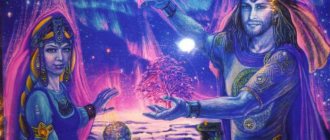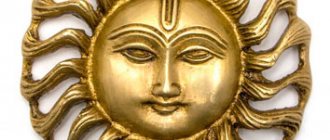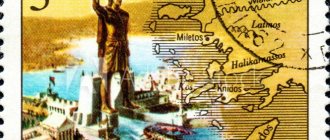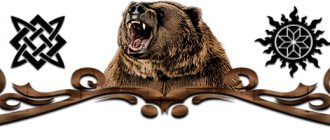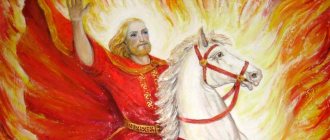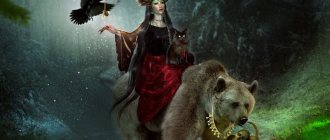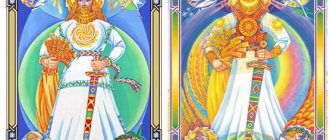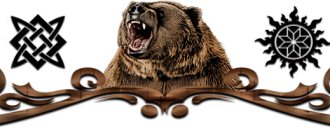The Slavs revered the Sun as a deity and tried to subordinate their lives to seasonal rhythms. On the one hand, the Sun for the Slavs was the center that gives light. On the other hand, they believed that this was the Sun King, whose domains were far, far across the sea, where there was eternal summer. It is located on high mountains, where in the palace it sits majestically on its golden throne. So, the Slavic sun was considered a divine being.
Mentions of the Sun in ancient records
They not only believed in the Sun, but also made up fairy tales about it. Ancient legends say that the Sun King has twelve sons who are embodied in the stars. In addition, the Sun has twelve kingdoms, and in each of them one of his successor suns is in charge.
Every day the Slavs offered a prayer to the Sun. It was impossible to ignore this matter, because the deity was considered the patron saint of the family, and therefore there was always an image of him in every house. In addition, people believed that it brings happiness, encourages the good, and punishes the evil. Moreover, it was believed that the Sun is the ruler not only of the sky, but also of the earth and people. The people believed that they had control over the winds, weather and harvest. The sun was closely watched. If it was hidden behind the clouds, it was interpreted as a sign. The Slavs also believed that the will of the deity was monitored by seven messengers, who appeared before the world in the form of tailed stars.
Not only in fairy tales is there a mention of the Lord of the Sky - the Slavic sun is also mentioned in the work of the 10th century Arab writer Al-Masudi. Descriptions can be found in his work “Golden Meadows”. The writer speaks not only about Slavic temples, but also about unusual openings through which it was customary to observe the sun. Thanks to this, they even predicted the future - special marks and precious stones were inserted for this purpose.
The work of Ibrahim ben Wesif Shah confirms the worship of the Sun. This another Arab writer mentions not only that the Slavs had a special attitude towards the heavenly body, but also about the holidays dedicated to it. There were seven of them in total, each of which was called by the name of one of the constellations, and the main one was the festival of the Sun.
You can find beliefs associated with this deity in chronicles. Thanks to these short references, it is easy to understand: the sun played an important role in human affairs.
Legends and myths
- According to legend, the god Yarilo was born from Veles and Dodola .
It happened like this. In time immemorial, the god Veles was inflamed with a forbidden passion for the wife of his brother Perun - the goddess of the storm Dodola. He could not accept that the beautiful goddess chose the thunderer over him and turned into a beautiful lily of the valley, which Dodola noticed one day. She smelled the flower and fell asleep, and when she woke up, Yarilo was born, who became the embodiment of the bright and strong love of his father Veles and the passionate, unbridled character of his mother Dodola. - Another myth tells how life began on earth .
A long time ago, Mother Earth of Cheese slept soundly, motionless and cold. Yarilo illuminated her with his light, took pity on her and was inflamed with love, after which he began to shower her with kisses. The earth awoke from sleep, and in the places where the lips of the passionate god touched it, seas, forests and rivers appeared. From the sacred union of the Earth and the Solar God, all living beings, plants, animals, birds, and then all people in the world were born. - According to one of the beliefs of the ancient Slavs, it was Yarilo who gave bread to people .
Previously, no one cultivated the land or grew wheat, because the peasants were very afraid of harming Mother Raw Earth and causing her pain, which is why they never dug up the soil. And one day Yarilo showed people wonderful cakes made from flour, which the gods had previously tasted in their heavenly kingdom, and showed how to cultivate fields and grow wheat. And the Earth itself, which selflessly loved the young solar god, who nourished it with warmth and strength, graciously allowed people to get bread - the most valuable fertile gift. Since those times, Yarila has been considered the patron god of fertility and prayed for a rich harvest.
Son of Svarog
The deity was not only a source of light and warmth and was considered a protector of the family, but also, according to some studies, the Slavic sun god is the son of Svarog. Slavic Svarog was identified with Vulcan. He is the god of lightning and the blacksmith of celestial weapons. Scientists claim that the pagan god Perun is the second name of this deity. They also draw attention to the fact that the pantheon of Slavic gods is very similar to the Egyptian ones.
According to the beliefs of the Slavs, this god of heavenly weapons had two sons. Like their father, they radiated light. One is Fire, the other is Sun. The second son had another common name - Dazhdbog. And, if you turn to ancient sources, you can find information that the Slavs are considered the children of Dazhdbog.
One of these references was found in “The Tale of Igor’s Campaign.” The sun is mentioned there as the Grandfather of the Slavs. He is also called in folk songs. They called him affectionately - Lado. It is synonymous with peace, love and joy. If we go back to the times of matriarchy, the feminine principle was embodied in the name of the deity - Lada.
The name “Dazhdbog” did not come from the word “rain”, as some sometimes think. The word is based on the phrase “the giving god.” Gold and silver were considered the symbols of this deity. Dazhdbog was especially worshiped in the 11th-12th centuries. The Russian people considered Dazhdbog their protector and called themselves his grandchildren. They even spoke of him as the first ruler.
Note: read the latest economic news on the VRost information portal.
Flying on a chariot harnessed by four golden-winged horses - this is how the deity was depicted. In his hands are ritual rods where fern leaves were forged. Bright sunlight came from the fire shield.
The advent of Christianity changed the traditional way of life of the Slavs. Gradually, they began to attach less importance to the Sun, and a similar moral teaching is found in Kirill of Turov. He complained that one should not look for God in the sun or moon. But it was not possible to force the Slavs to completely renounce their old beliefs - the old culture mixed with new Christian customs, and legends about the sun continued to be passed on from generation to generation.
Lagoda
Several chronicles and folk legends have survived to this day that the sun was revered by the Slavs. The oldest of them belongs to the 10th century Arab writer Al-Masudi. In his work “Golden Meadows,” describing Slavic temples, he notes that in one of them, holes were made in the dome to observe the sun’s rising points, and that precious stones with inscriptions that predicted the future were inserted there [1]. Another Arab writer Ibrahim ben Wesif Shah writes in his writings that the sun was revered by the Slavs, and that one of the Slavic peoples celebrated seven holidays named after the names of constellations, the most important of which was the holiday of the Sun [2].
In the chronicles there are expressions that indirectly point to the ancient beliefs of our ancestors in the participation of the sun in human affairs: “the sun did not tolerate this, the rays were hidden” - “the sun perished and became like the month, and the unspoken say: we are devouring the sun” [3].
During the formation of Christianity in Rus', pagan beliefs, through the efforts of the clergy and government officials, began to gradually change. For example, you can come across the following teachings from Kirill of Turov: “Do not call yourself a god either in the sun or in the moon” [4], “Is it a good idea to worship a darkening ray, rather than an immortal ray and a God created, and not God I will create everything” [5 ]. The Slavs managed to combine old pagan beliefs with new Christian ones. Slavic culture is so deep and multi-layered that legends about the sun as a divine being were passed down from generation to generation. And apparently, everything is not so simple here...
After all, in ancient Slavic fairy tales it is said that the Sun is a king, that he owns twelve kingdoms [6], and in each he made one of his twelve sons, twelve suns, the master, that the Sun King himself lives in the sun, and his sons live in the stars . The most interesting thing is that the Slavs believed that the sun, foreseeing unfortunate events, lets people know about them and stops on the way or hides in the clouds . In addition, they believed that it helps people, but at the same time persecutes the unworthy who deserve its disfavor. Here you can also remember the proverb: “Beside the sun, there is the Lord himself.”
The sun was revered on the one hand as a heavenly body, located in the middle of the world, illuminating everything, and as God, as the Sun King. The Slavs imagined his kingdom somewhere overseas, in the land of eternal summer and eternal life, from where the seeds of life fly to us , and his palaces were located on high, sacred mountains (the word “palace” from ancient Slavic means chamber, mansions, palace). According to beliefs, there the Sun King sits on his purple, gold-woven throne. Seven stars of angel-judges and seven messengers flying around the world in the form of tailed stars carry out his will. The sun was revered as the holy Lord of heaven, earth and people. They believed that the stars and the winds, the harvest and the weather depended on it; They believed that the sun helps good people and punishes those who stumble . The sun was also considered the protector of orphans and the patron of family peace and happiness, so every family had to have its image. And the most interesting thing is that the Sun, as the ruler of everything, was addressed with prayer not only in trouble or illness, but also constantly, every day [7].
Scientists still cannot answer the question why the number seven, as well as seven deities or angels, is so often found in the beliefs and mythology of not only the Slavs, but practically all ancient peoples? Seven planets, and seven days of the week, seven horses of the sun and seven angels-judges, seven gates of the sun Mithras, seven herds of Helios, the seventh day of each month, like the birthday of Apollo, the ancient Sumerians had seven great gods looking “at the magic wheel of the movement of the World ... awarding Fates to people,” seven “Immortal Saints” led by Ahura Mazda in Zoroastrianism, seven great gods who ruled Egypt for 12,300 years, and, finally, seven Archangels in Christianity (and eight in Orthodoxy!), in the legends of eastern peoples there are seven Bodhisattvas of Shambhala. Perhaps, by answering this question, scientists will unexpectedly come closer to solving other mysteries?
By the way, ancient Slavic symbolism contains the legendary
seal of Shambhala : the sun , inside of which there is a truncated pyramid and a triangle at the top. The eye, according to legend, is the all-seeing eye of God. And the triangle means the connection of the three principles of the construction of the Universe: Lotus, Allat and God (Fig. 1) [8], [9]. And even today in almost every Orthodox church you can also find this unusual seal, one of the important elements of which is the sun! (Fig. 2)
Other studies of the beliefs of the ancient Slavs tell us that the Sun was revered as the son of the supreme deity of pagan Rus' - Svarog. But first things first. In the Ipatiev Chronicle there are the following words: “And after the flood and the division of the tongue, the first Mestr from the family of Ham reigned, after him Eremia, after him Theosta, who also called Svarog the Egyptians; This reigning Theosta in Egypt, during his reign, a tong fell from heaven and began to forge weapons.” Here the Slavic Svarog is identified with the ancient Theost or Ephaestus, Vulcan, Egyptian Fta. Vulcan is the god of lightning, the blacksmith of heavenly, divine weapons. Here it is also worth paying attention to a certain connection between the Slavic pantheon of gods and the Egyptian one, which is confirmed by the chronicles. This supreme god, the god of lightning, also had another name - Perun. Researchers come to the conclusion that Svarog and Perun are different names for the same deity [10].
It is believed that the supreme deity Svarog-Perun gave birth to two sons: the Sun and Fire. In the above text of the Ipatiev list of the chronicle we read further: “And according to this [i.e. according to Svarog] his royal son, named the Sun, is called Dazhbog... The Sun is the king’s son of Svarog, who is Dazhbog.” Fire is also called the Brother of the Sun, the son of Svarog: “Fire to pray, his name is Svarozhits.” And the most interesting thing is that ancient sources call the Slavs the grandchildren of Dazhbog . For example, in “The Tale of Igor’s Campaign” the sun Bazhbog appears as the grandfather of the Slavs, and under this name he is still called in folk songs as Did, Grandfather. His other name is also known - Lado , which means Light, Beauty, Peace, Love, Joy. For example, the Croats have this folk song: “Lepi Ivo terga rozhe, to you, Lado, God shine!” Lado, listen to us, Lado! Pesme, Lado, sing, our hearts swear: Lado, listen to us, Lado! and the Serbs have an old song in which people pray to God to make him shine: “Shine, shine, O God!” It is worth noting that in even more ancient times, the times of matriarchy, that is, the primacy of the feminine principle in society, the Slavs revered the goddess of love and good Lada .
The fact that the Sun was considered the grandfather or father of the Slavic people is also emphasized by the ancient song, which is found with minor changes in the epic of all Slavic peoples. After all, we have the same root!
“Sunny, sunshine, look out the window! Your children are crying, asking for food and drink.”
The meaning of these simple words is apparently much deeper than it might seem at first glance. After all, if the Slavic people are considered the grandson of the Sun and are under his special protection, then turning to them with a request for drink and food can be interpreted as a request for spiritual food, without which not a single person on Earth can do.
According to the beliefs of our ancestors, the Sun occupies a special place in the structure of the world. It was believed that it was in the middle. For example, the Serbs had a belief that beyond the world where the Sun shines, the kingdom of darkness extends. This legend, like many other pagan ones, only changed with the advent of Christianity without losing its essence. Indeed, to some extent, the idea is that where the Sun does not shine, where people lose Faith and Love for God, where a person violates any moral principles, darkness begins. Moreover, it is worth paying special attention to the fact that darkness comes, first of all, inside the person himself - not somewhere outside, no one knows where, but precisely inside. Therefore, the Bible says: “Whoever is in Love is in God, and God is in him, for God is Love itself.”
It is also interesting that with the adoption of Christianity in Rus', there was still some substitution of concepts. For example, we have already said that the Sun deity was called Lado, meaning Light, Peace, Beauty, Love. That is, people used this name in a positive way. After the adoption of Christianity, the name Lado became the name of the demon and thereby received a negative connotation. People sometimes say: “go to Lad” or “to Lyad”, instead of “go to hell.” Therefore, if suddenly in life you hear the words “go to Lad” addressed to you, you can only rejoice, because in fact they are showing you the path to the deity of Light and Love.
So, we have looked at the main Old Slavonic beliefs in the Sun as a deity. This information is valuable for us in the sense that under the apparent primitiveness and naivety of views there are hidden deep layers of secret knowledge that are found in the culture of all ancient peoples, from the Sumerian civilization to Ancient Egypt, from the American Indians to China and India. And since the beliefs of ancient peoples have so much in common, perhaps they have the same source? In addition, knowledge of the original Slavic culture will allow us to understand that the modern borders separating different Slavic peoples are only temporary and artificially created. After all, ancient Arab and Greek travelers, visiting different regions inhabited by the Slavs, emphasized one thing - there were practically no differences in the culture and life of the Slavs from south to north, from east to west. But this is the topic of our next publications.
Literary sources:
[1] M. Charmoy, Relation de Mas'oudy etc. Memoires de l'Acad. Imper. des Sciences de S. Petersb. VI-eme serie. Tome II. 1834, p. 320. [2] M. Charmoy, p. 326. [3]. Lavrent. Chronicle. Full SOBR. Years. I, page 71. [4]. Moskvityanin, 1834, I, Materials, p. 243. [5]. 16th century manuscript The story is soul-saving. [6]. Makarov, “On the solar kingdoms”, Rus. Traditions II, p. 103. [7]. I. Sreznevsky, “On the adoration of the Sun among the ancient Slavs,” Journal of Min. Nar. Enlightenment 1846, No. 7. [8]. Anastasia Novykh, “Crossroads”, Kyiv, 2004 [9]. Anastasia Novykh, “Birds and Stone”, Kyiv, 2004 [10]. S.M. Solovyov, “Essay on the morals, customs and religion of the Slavs, mainly Eastern, in pagan times,” 1849.
To be continued…
Vladimir Oksenenko
Reflection in culture
Worship of the Sun was reflected in the way of life of the Slavs. Mention of it can be found in various sources:
- fairy tales;
- ritual songs;
- riddles;
- conspiracy.
For example, ritual songs were intended to awaken the Sun. Therefore, pancakes were baked in its form and Maslenitsa was burned. In addition, after sunset we tried to go out less. It was believed that it protects people from evil spirits. After all, as soon as the first rays penetrate the earth, the evil spirits scatter.
Slavic god of the autumn sun
Svarog as the lord of the autumn sun.
Svarog is considered the patron saint of the autumn sun. The time of the first night frosts, the time of harvesting and preparing for winter. Svarog was the progenitor of the first gods, he created the firmament of the earth and taught people to plow the field, and gave a plow. Considered the patron saint of blacksmiths.
Image of Svarog. In Slavic mythology, Svarog is represented in the form of a blacksmith. During war, he is depicted as a warrior with a sword in his hands.
The time of the Svarog sun from the autumn to the winter solstice.
Slavic sun gods replace each other from one solstice to another and correspond to a specific season.
Ancient symbolism
In the symbolism of the Slavs one can find the famous seal of Shambhala. A truncated pyramid, with a triangle on top where the eye is located. It is believed to symbolize the all-seeing eye of God. The triangle also has its own meaning - it unites the principles of the structure of the Universe. These three components are Lotus, Allat and God. If you are careful, you can find such a seal in many Orthodox churches.
Another interesting symbol is the seven holidays dedicated to the Sun and its seven heavenly messengers. In general, this number seven is mystically present in almost every nation in myths and beliefs. Seven great gods, seven planets, seven days of the week, seven angels-judges - appear in many places. But why exactly seven, scientists still don’t know. For example, the ancient Sumerians believed that the great gods looked into the magic wheel of the world and awarded people certain destinies. And these gods were also seven.
Symbol of the god Khors. Sign of the God Khorsa
One of the well-known symbols of the sun is a circle, personifying space and time, with a dot in the center, which is the image of the Sun - the center of our solar system. The same symbol denotes our luminary in the form of an Egyptian hieroglyph, which speaks of the common ethnocultural roots of the original single ancestral home, which is the foundation for all religious ideas of the peoples who later settled in different territories. The first Aryans in Egypt11 appeared in the 4th century BC. e., where they brought religious views and culture. Thus, the image of the Sun among the ancient Egyptians was a disk with falcon (eagle) wings.
In modern amulet art, the sign of the god Khors is considered to be the Solstice, which is a cross with inwardly curved ends directed in the direction of salt (clockwise), personifying the continuous flow of life. Also, this sign of the god Khorsa reflects the image of our galaxy, which is in constant rotation. God Khors, bringing to the earth the rays of the Light of Ra, the pure light energy of the highest divine luminary, thus symbolically conveys the image of the universal law of perpetual motion, the continuous development of all things. The Horse sign is one of the powerful solar amulets, for it carries within itself the image of the source of the life-giving power of the universe, the eternal power. Another symbol of the god Khorsa is called Colard, which represents a fiery cleansing power.
God will bring protection to the owner of the Khorsa amulet in difficult life situations, but it is important to understand that any amulet that gives protection and strength from our bright gods shows support only to those whose thoughts are pure and who follow good aspirations on their path in life, that is, those people whose actions are not motivated by selfish goals. Moreover, using the amulet will not bring good luck to those who seek to use the power of the gods for selfish purposes or to the detriment of others.
PS
God Khors illuminates our earth with pure rays of sunlight, bestowing vitality, saturating everything that exists with prana. It supports life on earth with the life-giving energy of the Sun. The first two hours after sunrise are considered the most favorable time. The sun's rays carry bright, beneficial energies, especially on the days of the equinoxes and solstices. Get up at dawn, raising your hands to the heavens with respect, greet our Bright Sun, whose autumn face is revealed in the image of the god Khors. Let all the light that your soul radiates shine with good energy around you. Learn from the Sun selfless giving, giving the light of goodness and good joy to all the people around you. Remember that everything that we emit into the world is reflected back to us. The more light we emit, the more goodness our world will be filled with.
Solar symbol among the peoples of the world
For the Aztecs, the closed circle served as a kind of multifunctional calendar, which had the appearance of a sun stone. With its help, they determined astrological data and found out the time. The talisman was also used for harmonization and knowledge of the future.
The Indians believed in the solar spirit, which is the progenitor of everything and is responsible for the cycle of things. Amulets with his image gave strength and protection to warriors, warmed them on cold nights and brought good luck.
The Scandinavians described the symbol as a wheel from the quadriga of the sun itself. It was made exclusively from gold. And it meant only positive things: prosperity, prosperity, health, fertility and a rich harvest.
The symbol of the sun in ancient Egypt bore the original name - “winged disk”. He personified Horus, who stood up to fight Set. The talisman was used to protect against any negativity, be it witchcraft or physical influence.
The Slavs loved to make nauzes - amulets in the form of knots, personifying the sun. They performed protective functions and drove away dark thoughts. People actively make such amulets to this day.
Let's look at the Slavic symbols of the sun in more detail.
Solar cross
This symbol has four rays and personifies natural elements, as well as important events in life: the autumn and spring equinoxes, the summer and winter solstices. This amulet was most suitable for forest guardians and warriors.
This sign was worn as an amulet only by mature people in order to receive the help of their ancestors in gaining wisdom and raising a child. The symbol of the sun in the form of a cross was not allowed to be worn by children, boys and girls, since it was believed that it would spoil the character or disrupt the psyche.
Holidays in honor of the deity
Holidays in honor of Yarila began on the day of the spring equinox. On certain days, until the twentieth of June, people honored the spring god with the help of rituals and fun, so that the harvest would be rich and life joyful.
As a reflection of the legends of deep antiquity, in some places people for a long time, right up to the nineteenth century, on Yarilin’s day at the end of April, thanked Yaro-God, choosing him a wife - Yarilikha from among the girls of the village. She was dressed in white and danced around her with songs praising her groom, and a young guy appeared in the field riding a white horse, naked to the waist with a wreath on his head and ears of corn in his hand, urging his horse with his bare feet, riding around the village and surrounding areas. fields, unsealing the cornfield.
Games between boys and girls with fairly open relationships were also encouraged, but within the framework of decency.
On Yarilin days, fairs and feasts were held in the fields with scrambled eggs, pies and sweets. Fist fights were also traditional, since the spring god himself was not distinguished by his softness and flexible character.
People celebrated the beginning of the sowing season with wild fun, games, songs and round dances. Instead of a guy and a girl, stuffed animals could be used, which at the end of the holiday were buried in the ground, burned in some places or thrown into the water.
On the day of driving cattle to pasture, a holiday dedicated to the deity was also held, which lasted for quite a long time. On this day, they baked kozulki - unleavened rye cookies in the shape of those animals that were driven out into the field. They were treated to shepherds, and the surplus was distributed to children.
The rituals could differ depending on the region, and time also left its imprints on them. But the fact that people felt with all their hearts unity with the intelligent forces of nature determined their attitude to life through gratitude to those who created it and gave the great gift of cognizing its diversity. They adhered to the rhythms of natural harmony, and their lives were filled with happiness, for which they thanked, first of all, the god Yarila.
The meaning of the sun for humanity
Almost all the tribes that have ever existed on our planet worshiped the celestial body. He was considered an eternal and powerful force, a source of inexhaustible energy. People have always associated grace and their hopes for a better future with the sun.
Thanks to observations of the burning star, humanity has made many discoveries. This is a wheel, a calendar and other amazing things. Therefore, it is not surprising that even modern people very often use the symbol of the sun in amulets and tattoos.
Appearance of the deity
The appearance of any spiritual object, created by a collective effort of thought, will and spiritual strength, has the features that the imagination of its creators endowed it with.
The consciousness of the people of that era depicted him as a young man with blond hair, wearing a wreath of herbs and flowers, naked to the waist and barefoot, sitting on a white horse with a bunch of ears of corn in his hand. It was believed that when he moved on foot, in the place where his foot stepped, grass rose and flowers bloomed.
Sometimes it was a woman in men's clothing, holding ears of corn in one hand and a stuffed human head in the other. This symbolized the victory of life over death.
Since Yarilo was one of the seasonal gods, dying and reborn again, in the spring this deity was portrayed as an ardent young man, favoring abundant harvests, and in winter - as a strict old man, destroying everything that he had created.
Among the Western Slavs, the god of spring was depicted with a shield on which the sun was depicted, and sometimes he pulled arrows of the sun's rays, which were also considered arrows of love.
Spring and frivolous god
With the onset of spring, Khors retired, and his place was taken by Yarilo, the next in line god of the sun among the Slavs. He reigned until the summer solstice. Unlike the modest-looking Khors, Yarilo was presented as a handsome young blue-eyed man with golden hair. Picturesquely decorated with a scarlet cloak, he sat on a fiery horse, driving away the belated cold with flaming arrows.
True, even in those days, evil tongues attributed to him a certain resemblance to the loving Greek god Eros and even to Bacchus, the god of wine and noisy fun. It is possible that there was some truth in that, because under the rays of the spring sun the wild heads of our ancestors circled with the intoxication of voluptuousness. For this, the Slavs called him the god of youth and (lowering his voice) love pleasures.
Other sun gods among the Slavs
According to Slavic beliefs, in each period of the year the main role of the governing gods belonged to other solar gods. Yarilo was considered the god of the spring sun.
Besides him, the seasonal solar lords were:
- Kolyada.
- Bathed.
- Sventovit.
Kolyada
Considered the son of Dazhdbog - the supreme solar god - Kolyada was his smallest manifestation (the sun-baby). It replaces the old sun at a time when it is almost invisible (winter solstice) and when almost no heat comes from it.
Being a young deity, a young sun, Kolyada has the strength and zeal that can withstand winter. This god was depicted as a newborn baby, which is why people celebrate the birth (Christmas) of Kolyada.
Kupala
This is the god of summer, love and light, good luck, health and good deeds. The time of his effective power begins with the summer solstice and ends with the autumn equinox. It has the greatest power on the day when it is longest and the night is shortest.
At this time, his magic has the greatest intensity and direction. On these days, the most cheerful and revered holiday by the Slavs is held, which is a unique symbol of the triumph of love and warmth as a divine gift to the human soul, through which it experiences the earthly world for further evolution in the worlds of radiance and light.
This is the time for games and water fortune-telling, fairs and significant meetings.
Sventovit
Considered the god of the autumn sun, grain and harvest. Its duration is: autumnal equinox - winter solstice. He is also considered the god of white light. Among the Western Slavs, Sventovit was considered the main god in the pantheon, a horseman god whose main task was to fight the darkness.
His light is the highest good of heavenly love, enlightenment and illumination, through which pure souls can maintain contact with the higher worlds.


